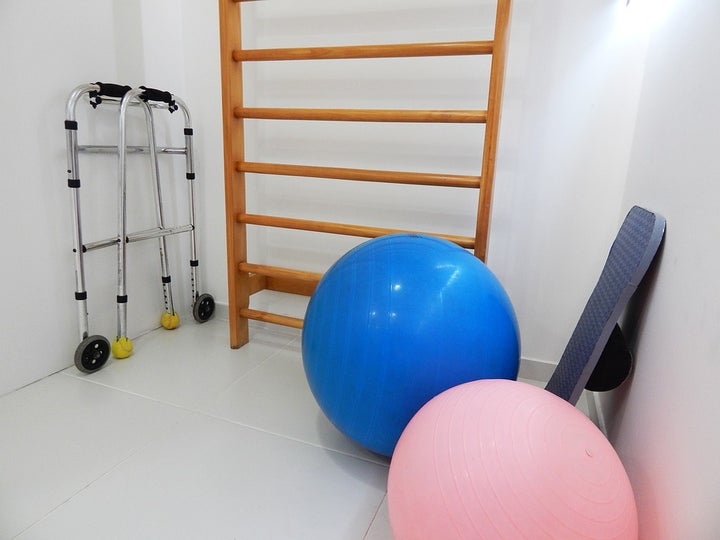
Physical Therapy Room
I was having a conversation this morning with someone who was asked to consider physical therapy again, despite best efforts, instead of going the surgical route. My feelings are pretty clear on this.I believe physical therapy works well when the injuries are minimal and the person much younger, with less of a medical history of injuries. Or, if you can afford it (which most can not) private sessions.
PT facilities assign you to on-premise therapists after fully evaluating your case. That makes the patient safe and secure in the knowledge that they are in good, expert hands. However, it’s what happens after that initial appointment that may undermine your healing progress.
A therapist is not necessarily permitted to treat the whole body, as they are asked to work on the one issue you came there for. For instance, if you had back, knee, or hip surgery (for which you are not being treated for at that time) and being presently treated for an issue with an arm or a foot, you might only legally be treated for the issue assigned to your case. The focus is on what the insurance companies will pay for in regard to your coverage.
There is also the chance that therapists rely on assistants taking over for them in the middle of your therapy sessions. That assistant will look at the clipboard that indicates your injury and treatment, but they, too, are not permitted and/or required to treat pre-existing conditions you may have, that are not cleared for in therapy. I believe that leaves a person open to creating more health issues for the future. It’s like curing one problem and exacerbating others.
As someone who has had this happen personally several times, and over several years, I looked into how I can avoid this possible pitfall. It is certainly not the fault of the technician or the patient, but the insurance company’s requirements.I considered the following questions to take control of my treatment, so that I might avoid injury in those areas not being treated.
- Choose the facility for therapy carefully and based on doctor and patient recommendations. A previous patient will have the inside track which can be a valuable heads up.
- Discern whether or not the treatment scope will cover any pre-existing conditions you might have in your medical history and give them careful consideration.
- When at the facility, make sure that each physical therapy technician or assistant is aware of your complete history, and refers to it during your treatment.
- Be an active participant in your therapy. Do not be afraid to speak up if you are having any doubts about your treatment.
- Never let a technician who has a cold, sniffles, or any health issue, work on you, as they should not be treating a patient while they are sick. The treatment facility is supposed to be a healing environment.
I realize that some therapists who read this may take offense, but it is not meant to offend at all. It is meant to enlighten, as I am speaking from personal experience, as well as the experiences of others who have suffered injury that caused them pain enough to change the way they approached their physical therapy experience. PT can be a wonderful experience if the the stress of additional injury is avoided . Knowledge is very powerful to healing.